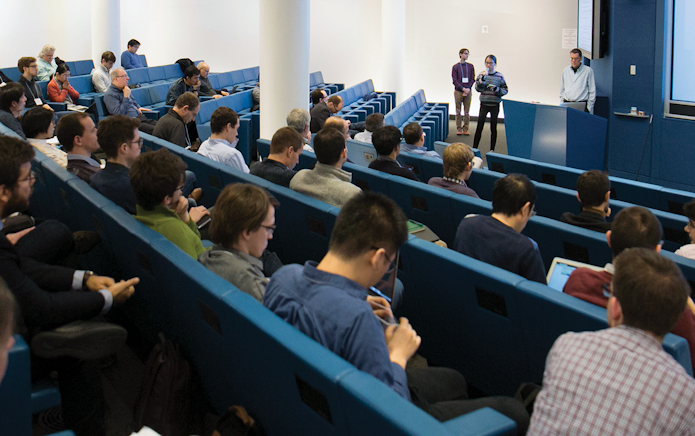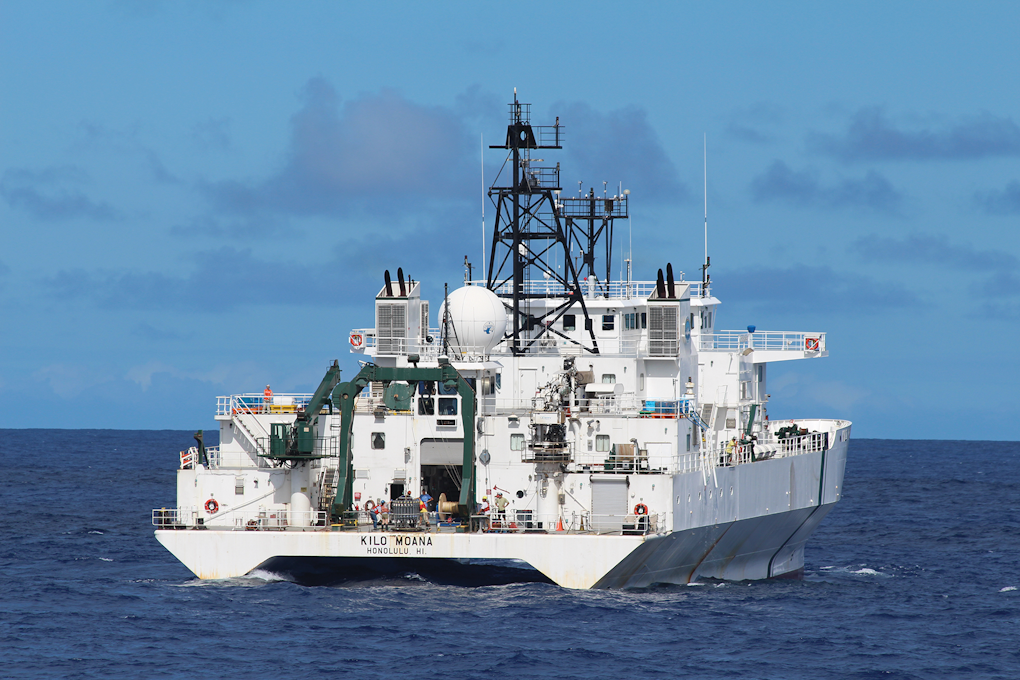
Working as a Team: Collaborations as a Key to Breakthroughs
 In early 2012, in light of the success of the Simons Foundation Autism Research Initiative (SFARI), Jim Simons thought to replicate this success with more of what he called goal-driven collaborations. Similar to SFARI, these collaborations would bring together many scientists to make long-term, significant progress toward an important scientific goal.
In early 2012, in light of the success of the Simons Foundation Autism Research Initiative (SFARI), Jim Simons thought to replicate this success with more of what he called goal-driven collaborations. Similar to SFARI, these collaborations would bring together many scientists to make long-term, significant progress toward an important scientific goal.
After bouncing the idea off a few people, he and Marilyn Simons convened a weekend-long meeting at Buttermilk Falls, a small resort on the Hudson River. The gathering brought together 18 distinguished scientists from a wide range of disciplines, along with some foundation personnel. Biologist David Baltimore chaired the meeting, which sought to determine whether starting such scientific collaborations really was a worthwhile idea and, if so, to outline the criteria for establishing such projects.
Attendees unanimously agreed that funding such efforts was a good idea and established criteria. Additionally, participants proposed a number of such collaborations. Two of these proposals, Origins of Life and the Global Brain, started soon after the meeting, and many more were added in the years that followed.

Today, the Simons Foundation supports 18 large-scale collaborations across different areas of science, providing funding for conferences, travel, postdoctoral fellows and graduate students, and computing or laboratory equipment.
The collaborations range in size from about 10 investigators (plus associated postdoctoral fellows and graduate students) to more than 75 investigators in the case of the Simons Collaboration on the Global Brain.
“The collaborations are moving science forward in ways that probably wouldn’t happen otherwise,” says Marian Carlson, who directs the foundation’s life sciences division.
Successful proposals for Simons Collaborations enjoy a longer-term funding commitment from the foundation than is available through most other avenues: up to seven years in the foundation’s mathematics and physical sciences division, and up to 10 years in the life sciences division. Each collaboration holds an annual meeting at the foundation’s New York City headquarters, and the collaboration leaders also meet at least once a month, either in person or through video conferences.
These meetings often result in unexpected synergies. “There are all sorts of collaborations springing up that I wasn’t anticipating,” says Michael Follows of the Massachusetts Institute of Technology, who leads the Simons Collaboration on Computational Biogeochemical Modeling of Marine Ecosystems (CBIOMES).
“Some of these people are in different areas whom I might never have met except through this project,” says Shubha Sathyendranath of Plymouth Marine Laboratory in England, who has begun several different joint projects within CBIOMES.

While it’s still early days for many of the collaborations, some are starting to bear fruit. For example, the Simons Collaboration on Homological Mirror Symmetry, which is trying to develop a physics-inspired bridge between two areas of mathematics called algebraic geometry and symplectic geometry, “has made tremendous progress in the last couple of years,” says Yuri Tschinkel, who directs the foundation’s mathematics and physical sciences division. “They may well succeed, in these seven years, in carrying out what they had initially proposed.”
While homological mirror symmetry lies decidedly in the realm of pure mathematics, other collaborations blend the theoretical with the practical. For instance, the Simons Collaboration on Hidden Symmetries and Fusion Energy is developing mathematical and computational techniques to search for the best way to design a particular kind of magnetic field to serve as a vessel for nuclear fusion reactions. “If they succeed, it would be transformational,” Jim Simons says.
It remains to be seen just what will emerge from each collaboration, but the energy and excitement among participants is palpable. “They seem to be making progress,” Jim Simons says of one recently created project, the Simons Collaboration on Cracking the Glass Problem, which is trying to explain how glass can be simultaneously amorphous and rigid. Whenever he sees those researchers, he says, “they’re smiling.”
